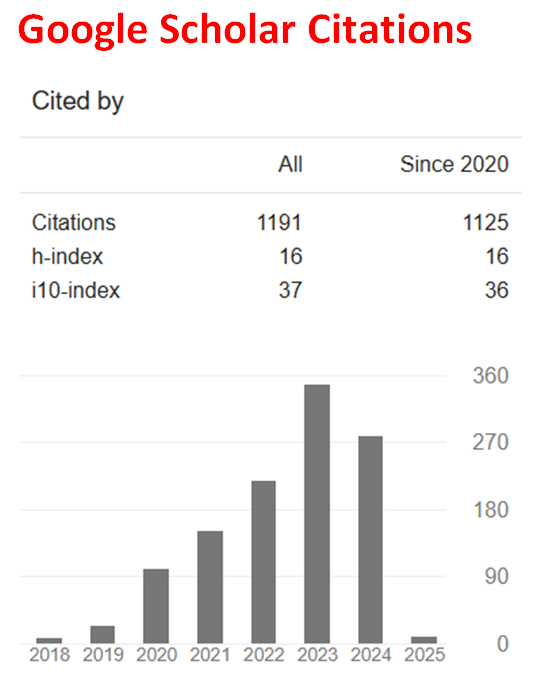Improved Two Stage Least Square Estimation with Permutation Methods for Solving Endogeneity Problems
Abstract
This study introduces permutation methods for Two Stage Least Square (2SLS) estimation to improve accuracy and address endogeneity in econometric analysis. The research compares traditional 2SLS with newly developed permutation methods, specifically evaluating their efficiency, predictive power, and precision across various datasets. Instrumental variables were used in a two-step process, applying permutation techniques to both the instrumental variable and the estimated endogenous variable. Results indicate that the classic 2SLS method is more efficient and precise in estimating intercepts, showing the least standard deviation in exact p-values (0.2396). However, the Permute $\widehat{X}$ method outperformed in estimating endogenous variables, demonstrating higher accuracy and stability with a standard deviation of 0.1121. The study highlights that while traditional 2SLS is reliable for intercept estimation, permutation methods, particularly the Permute $\widehat{X}$ method, offer significant improvements in handling endogeneity for endogenous variables. These findings suggest that permutation methods could enhance econometric analyses by providing alternative strategies for more accurate and robust estimates. The study’s contribution lies in advancing econometric methodologies by integrating permutation methods into 2SLS estimation, providing empirical evidence of their effectiveness. The research emphasizes the importance of robustness checks and sensitivity analyses in econometric studies, advocating for a tailored approach to selecting estimation methods based on specific data characteristics and research objectives. Future research should further refine these methods and explore their application in diverse econometric contexts.
Downloads
References
Anderson, M. J., & Legendre, P. (1999). An empirical comparison of permutation methods for tests of partial regression coefficients in linear models. Journal of Statistical Computation and Simulation, 62(3), 271-303. https://doi.org/10.1080/00949659908811936
Aronu, C. O., & Nworuh, G. E. (2019a). Permutation methods for Chow test analysis: An alternative for detecting structural break in linear models. Advances in Science, Technology and Engineering Systems Journal, 4(4), 12-20. https://doi.org/10.25046/aj040402
Aronu, C. O., & Nworuh, G. E. (2019b). Determining the relatively efficient test statistic measure between the traditional Chow test and the Milek permutation test for detecting structural break in linear models. International Journal of Latest Technology in Engineering, Management & Applied Science (IJLTEMAS), 8(6), 25-28.
Blum, J. R., Kiefer, J., & Rosenblatt, M. (1961). Distribution free tests of independence based on the sample distribution function. The Annals of Mathematical Statistics, 32(2), 485-498. https://doi.org/10.1214/aoms/1177705055
Fisher, R. A. (1935). The design of experiments (3rd ed.). Oliver & Boyd.
Janssen, A. (1997). Studentized permutation tests for non-i.i.d. hypotheses and the generalized Behrens-Fisher problem. Statistics & Probability Letters, 36(1), 9-21. https://doi.org/10.1016/S0167-7152(97)00043-6
López-Espín, J. J., Navas-Palomino, F. J., & Martínez, V. (2012). A parallel implementation of the QR-decomposition for the two-stage least squares method. Computer Physics Communications, 183(11), 2332-2342.
Pesarin, F., & Salmaso, L. (2006). Permutation tests for complex data: Theory, applications, and software. Wiley.
Sheikhi, A., Bahador, F., & Arashi, M. (2022). On a generalization of the test of endogeneity in a two stage least squares estimation. Journal of Applied Statistics, 49(3), 709-721. https://doi.org/10.1080/02664763.2020.1837084
Wilms, I., Croux, C., & Van den Poel, D. (2021). Correcting for omitted variable bias in regression models with a regression discontinuity design. Journal of Econometrics, 222(2), 539-556.
Joshi, R., & Wooldridge, J. M. (2019). Correlated random effects models with endogenous explanatory variables and unbalanced panels. Annals of Economics and Statistics, 134, 243-268. https://doi.org/10.15609/annaeconstat2009.134.0243
Lu, W., Kasimov, I., Karimov, I., & Abdullaev, Y. (2019). Foreign direct investment, natural resources, economic freedom, and sea-access: Evidence from the commonwealth of independent states. Sustainability, 12(8), 3135. https://doi.org/10.3390/su12083135
Khan, S., Peng, Z., & Li, Y. (2019). Energy consumption, environmental degradation, economic growth and financial development in globe: Dynamic simultaneous equations panel analysis. Energy Reports, 5, 1089-1102. https://doi.org/10.1016/j.egyr.2019.08.004
Shin, K., You, S., & Kim, M. (2021). A comparison of two-stage least squares (TSLS) and ordinary least squares (OLS) in estimating the structural relationship between after-school exercise and academic performance. Mathematics, 9(23), 3105. https://doi.org/10.3390/math9233105
Phipson, B., and Smyth, G. K. (2010). Permutation p-values should never be zero: calculating exact p-values when permutations are randomly drawn. Statistical Applications in Genetics and Molecular Biology, 9(1), Article 39, 1-12. https://doi.org/10.2202/1544-6115.1585
Fisher, R. A. (1935). The design of experiments (3rd ed.). Oliver & Boyd, London.
Dwass, M. (1957). Modified randomization tests for nonparametric hypotheses. Ann. Math. Statist., 28, 181-187. https://doi.org/10.1214/aoms/1177707045
Legendre, P. (2000). Comparison of permutation methods for the partial correlation and partial mantel tests. J. Statist. Comput. Simulation, 67, 37-73. https://doi.org/10.1080/00949650008812035
Ortner, T., Filzmoser, P., & Endel, G. (2015). Identifying structural changes in Austrian social insurance data. IFAC-PapersOnLine, 48(1), 115-120. https://doi.org/10.1016/j.ifacol.2015.05.152
Neuhaus, G. (1993). Conditional rank tests for the two-sample problem under random censorship. Annals of Statistics, 21, 1760-1779. https://doi.org/10.1214/aos/1176349396

This work is licensed under a Creative Commons Attribution 4.0 International License.
.jpg)

